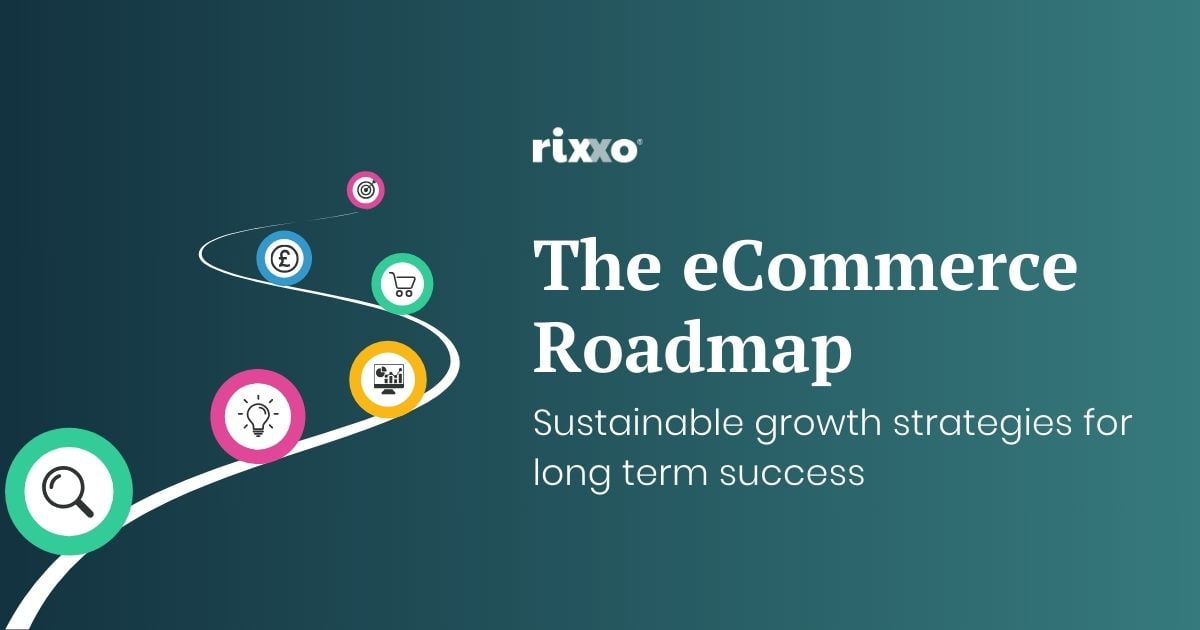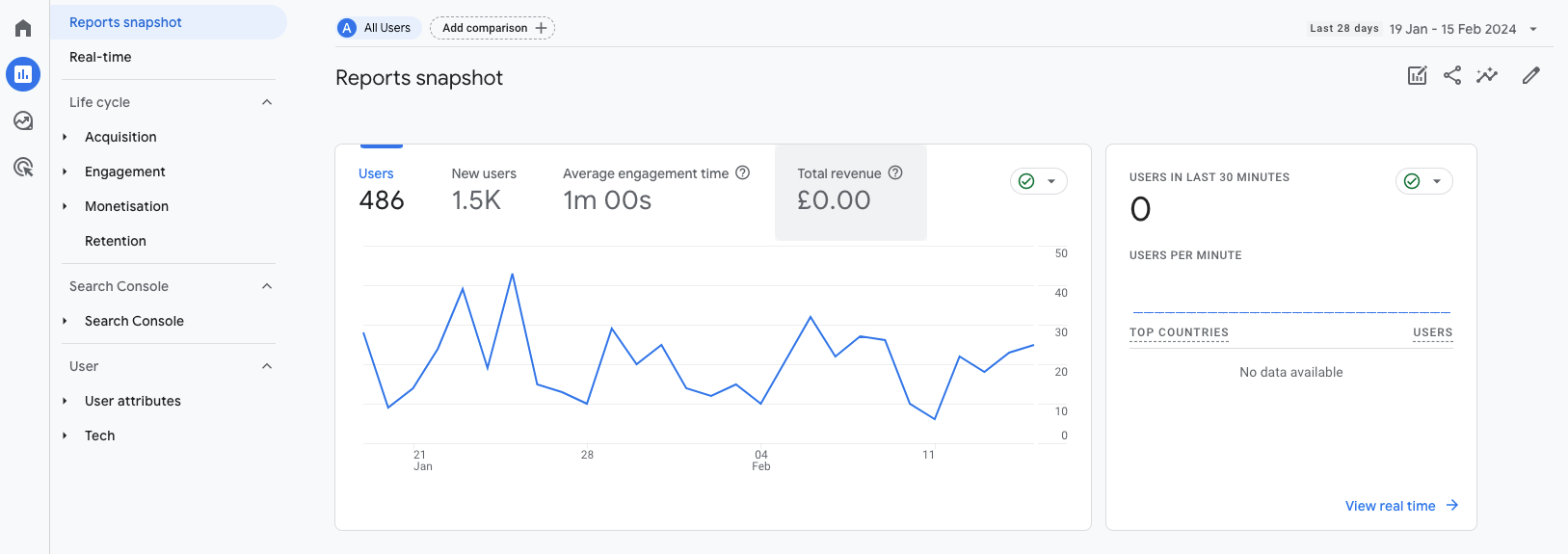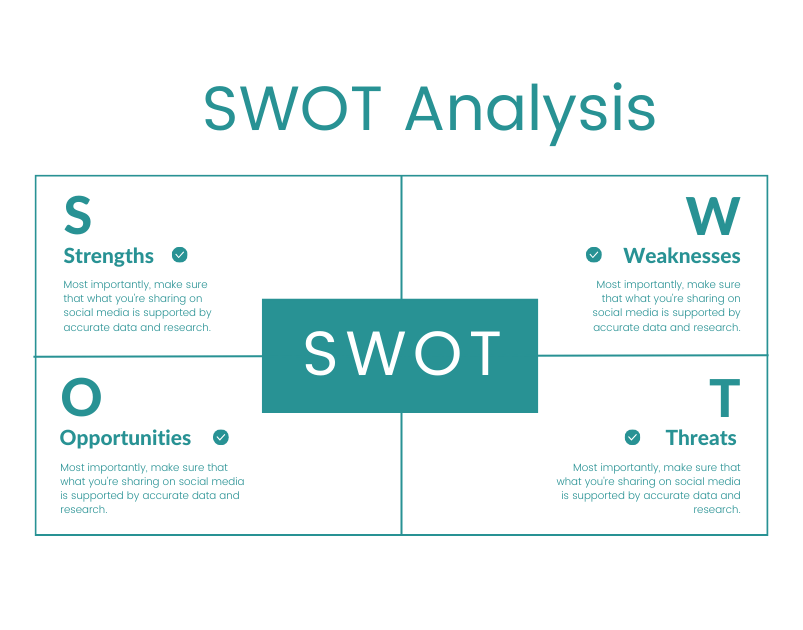The eCommerce Roadmap: Sustainable Growth Strategies for Long-Term Success

In an era where eCommerce is not just growing but booming, it’s estimated that by 2027, a quarter of all retail purchases will shift online. This surge has intensified the competition, presenting both challenges and opportunities for businesses eager to make their mark. Amidst this bustling digital marketplace, finding your footing might seem daunting. Many businesses find themselves hopping from one strategy to another, in search of the elusive formula for success. However, the real secret lies in consistency and a well-crafted approach.
As an eCommerce agency with more than a decade of experience helping clients build, grow and scale their eCommerce businesses, we know what works and which strategies you should focus your valuable time on. So we decided to put together a starter guide that an eCommerce business at any level can follow.
In the following article, we share proven strategies that work, plus practical tips to put them into action. Our goal? To give you a clear to-do list that guides you towards growth and success on your eCommerce journey.
Why do you need an eCommerce strategy?
“If you build it, they will come” is a strategy that worked 10 years ago, but no more. To stand out today requires a plan for sustainable growth. This includes marketing, sales, customer service, and inventory management. It’s about actively attracting and engaging customers, not just crossing your fingers and hoping they find you.
A well-designed eCommerce strategy will help you:
- Work with direction and focus: It helps you set clear goals and outlines how to achieve them, keeping your business on track.
- Understand your market: Researching your market and competitors ensures you understand what your customers want and how to offer it better than your competitors.
- Allocate resources wisely: Allocate time, money, and workforce – to activities that yield the best results.
- Adapt to trends: The digital market is ever-changing. A solid strategy allows you to stay ahead of trends and adapt quickly.
- Build a brand: A recognisable brand is the key to standing out from your competitors
- Measure success: With a strategy, you can set benchmarks and KPIs to measure your progress and success effectively.
The old approach of hoping for customers to stumble upon your business no longer holds water. A strategic plan encompasses marketing, sales, customer service, and inventory management, focusing on proactive customer engagement. It enables your business to move with intention, ensuring you have clear objectives and a path to achieve them.
The eCommerce growth strategies
Creating an eCommerce strategy involves multiple steps. We’ve broken it down into stages to help guide you through the process in a logical order:
- Know your numbers: Establish clear, measurable metrics for your eCommerce business.
- Know your customer: Research and identify your target market and customer needs.
- Know your competition: Study your competitors to understand their strategies and identify opportunities.
- Select the right tech: Choose eCommerce platforms and tools that suit your business needs.
- Make a resource plan: Mastering the delicate balance between in-house capabilities and outsourced expertise to navigate growth bottlenecks efficiently.
- Develop a marketing plan: plan your digital marketing strategies, including SEO, pay-per-click, content marketing, and social media.
- Optimise for user experience: Ensure your website design is intuitive, mobile-friendly, and user-centric.
- The importance of logistics: Plan your inventory management, shipping, and delivery processes.
- Focus on customer service: Develop strategies for customer engagement and support.
- Measure and track: Use analytics to help you make data-driven decisions and monitor progress towards your goals.
- Iterate and Adapt: Continuously refine your strategy based on performance data and market trends.
Now that we’ve outlined the key steps, let’s look at each one in more detail.
1. Know your numbers


Numbers, or metrics are the compass that guides your every decision and strategy. They help you form a big-picture view of what’s happening in the day-to-day of your business.
Whether it’s enhancing your online presence, boosting sales by a certain percentage, expanding your product range, or improving customer satisfaction scores, your objectives should be quantifiable, and knowing your numbers provides you with clarity. This clarity will not only drive your efforts in the right direction but also enable you to track progress and make informed adjustments along the way.
Think of these metrics as your business’s North Star, keeping you focused and on track. Here are the 5 key metrics to keep track of:
- Conversion rate: The percentage of visitors who make a purchase. A key indicator of how effective your site is at converting interest into sales.
- Average order value (AOV): The average amount spent each time a customer places an order. Increasing this can boost overall revenue.
- Customer acquisition cost (CAC): The total cost of acquiring a new customer. Keeping this low while maintaining quality acquisition is crucial.
- Customer retention rate: The percentage of customers who return to make another purchase. A high rate indicates strong customer loyalty.
- Website traffic: The number of visitors to your eCommerce site. A vital metric for gauging the reach and effectiveness of your marketing efforts.


Understanding your numbers is crucial for steering your business towards success. These metrics act as a guide, helping you see the bigger picture and ensuring every move you make is informed and strategic.
By setting clear, measurable goals and keeping an eye on key indicators like conversion rates, average order value, customer acquisition cost, retention rates, and website traffic, you’re not just guessing; you’re making decisions based on real data.
This approach ensures you’re always moving in the right direction, allows you to see how well you’re doing, and helps you adjust your strategies as needed.
2. Know your customer
Knowing your customer is truly a game changer. It enables you to tailor your products and marketing strategies directly to your target audience’s needs, preferences, and behaviours. This cuts marketing costs and improves user experience.
Practical tips for implementation:
- Surveys and feedback: Regularly collect feedback from your current customers through surveys or feedback forms.
- Market research: Use tools and resources to gather data on market trends and customer preferences. Commonly used tools include Google Analytics for website and customer behaviour, Google Trends for search trends, social media analytics platforms (like Facebook Insights and Twitter Analytics) for social media trends and engagement, SEMrush for SEO and market insights, SurveyMonkey for customer surveys and feedback, and Nielsen and Statista for broad market research reports and industry trends. These resources provide valuable insights into what customers are interested in and how they behave online.
- Customer personas: Create detailed customer personas that represent your typical customers, including their interests, needs, and challenges.
- Social listening: Monitor social media for mentions of your brand and competitors to get insights into customer opinions and needs.
- Rating and Reviews: Analyse and monitor your on-site ratings and reviews to understand positive and friction areas of the customer journey. Positive feedback highlights what you’re doing right and can be used in your marketing to attract more customers. Negative reviews, on the other hand, offer invaluable insights into where your business might be falling short and where there’s room for improvement. Responding to reviews, both positive and negative, shows that you value customer feedback and are committed to enhancing their experience.
Getting to know your customers is a big win for your business. It helps you make smarter choices in what you offer and how you market it, saving money and making customers happier along the way.
The tips we’ve shared, like getting feedback, using research tools, creating customer profiles, and keeping an eye on social media, are practical steps to help you understand your customers better. Start using these insights, and see the difference they can make in connecting with your customers.
3. Know your competition


Understanding the strengths and weaknesses of your competitors helps you to carve out your own space in the eCommerce market.
This strategy involves analysing your competitors’ approaches to marketing, customer service, product offerings, and pricing strategies to identify gaps and opportunities for your business.
Practical tips for implementation:
- Competitor analysis tools: Use tools like SEMrush, Ahrefs, or SimilarWeb to gather data on your competitors’ web traffic and SEO strategies.
- Social media monitoring: Keep an eye on your competitors’ social media channels to understand their engagement strategies.
- Customer reviews: Read customer reviews of your competitors to identify their strengths and weaknesses from a consumer perspective.
- Pricing strategy evaluation: Compare your pricing with your competitors’ to identify if you’re positioned as a premium or a budget option.
- Product range comparison: Analyse the breadth and uniqueness of your competitors’ product offerings compared to yours.
- eCommerce benchmarking: Go through the purchasing process of your competitors to understand their e-commerce experience and analyse how it compares to your business. This hands-on approach gives you insights into the user journey, from navigation ease and checkout process to the communication received after purchase. Assessing these aspects allows you to see where your competitors excel or fall short in customer experience, providing a clear benchmark for your improvements.
By understanding your competitors, you can identify what they do well and where they fall short. This knowledge allows you to fine-tune your business strategies, differentiate your brand, and offer something better or unique to the market.
4. Select the right tech
Picking the right technology for your business can be tricky. It’s a huge area with lots to think about.
That’s why a big part of our Foundations™ service is all about getting to know what your business needs. We take the time to understand everything and suggest the best platform to help your business thrive.
You need tools that fit your unique needs, whether that’s keeping track of stock, making customers happy, or understanding your sales data. The best tech setup will support your goals, grow your business, and make shopping easy and enjoyable for your customers.
Magento for example is great for businesses that need to customise a lot and plan to grow big. It has lots of features for managing your stock, understanding your customers better, and looking into your sales, which is perfect for larger companies with specific needs.
Shopify is super easy to use, making it a good choice if you’re just starting or want to grow fast. It has lots of designs and apps to improve shopping for your customers and make running your shop smoother, all without needing to be a tech expert.
WooCommerce works with WordPress, so it’s ideal if you already have a WordPress site and want to start selling. It’s open-source, which means it’s flexible, offering a budget-friendly way to get into online sales.
Choosing between popular platforms such as Magento, Shopify, and WooCommerce depends on how big your business is, how tech-savvy you are, and what you need from your online store. The right choice will help your shop do well over time.
Consulting an expert: If you’re unsure about which platform to choose, it’s wise to seek an expert’s opinion. Investing a small amount in consultancy fees can prevent costly mistakes down the line. An experienced team of eCommerce experts can assess your business needs and recommend the most suitable platform, ensuring that you get it right the first time. This approach not only saves you money but also ensures your project stays on track, avoiding the pitfalls of committing to the wrong platform. Their insights can be invaluable, helping you to navigate the complexities of eCommerce technology with confidence.
Practical tips for implementation:
- Assess your needs: List what you need in an eCommerce platform, like SEO capabilities, integrations, or specific payment options.
- Compare options: Look at popular platforms (e.g., Shopify, Magento, WooCommerce) and compare their features against your needs list.
- Consider scalability: Choose technology that can grow with your business. Think about future sales volumes and potential market expansion.
- Seek user feedback: Find reviews or ask peers about their experiences with different eCommerce tools and platforms.
- Test before you commit: Many platforms offer free trials. Use them to ensure the technology fits your business before making a long-term commitment.
Picking the right tech for your online shop is important and something you’ll want to take some time to get right. It’s also something that you’ll review as your business grows.


Need a helping hand?
We love talking strategy and we help eCommerce businesses of all sizes make the right tech decisions based on their unique business needs
5. Make a resource plan


The journey towards sustainable growth is often marked by periods of rapid expansion and unforeseen challenges. To navigate these pivotal moments successfully, businesses must develop a strategic resource plan.
A good plan not only ensures that you have the necessary skills and manpower to support your growth ambitions but also allows you to identify when external expertise can catapult you past potential bottlenecks.
A well-considered resourcing plan is helpful for:
- Scalability: It prepares your business for scale, ensuring that your team’s size and skills grow in alignment with your operational needs and ambitions.
- Flexibility: It offers the flexibility to respond to changing market demands and business priorities quickly.
- Cost efficiency: By understanding when to outsource and when to develop in-house capabilities, you can optimise your expenditure, investing in internal growth where it counts and leveraging external expertise for specialised tasks.
- Focus: It allows your core team to focus on their strengths and strategic priorities, while outsourced agencies handle areas outside your primary expertise.
Knowing when to outsource
Outsourcing to an eCommerce agency can be a game-changer, especially in areas like digital marketing, tech development, software integrations or customer service, where specialised skills can drive significant returns. The decision to outsource should be guided by:
- Skill gaps: Evaluate your team’s competencies and outsource functions that require expertise you lack in-house.
- Scalability needs: During peak seasons or when scaling quickly, outsourcing can provide the necessary bandwidth without the long-term commitment of hiring.
- Innovation and expert insights: External agencies bring fresh perspectives and can introduce innovative strategies and technologies that might be missing internally.
Knowing when to bring work in-house
Conversely, as your business grows, it might become feasible and advantageous to bring certain functions in-house:
- Core competencies: Activities central to your brand identity and customer experience should gradually migrate in-house to ensure control and consistency.
- Cost vs. benefit: Over time, the cost of outsourcing repetitive or large-scale tasks can exceed the investment in developing internal capabilities.
- Strategic importance: Functions that involve sensitive data, strategic planning, or key brand elements might be more securely managed within your organisation.
A smart plan for managing your resources is key to growing your eCommerce business successfully. It’s all about knowing when to get help from outside experts and when to handle things yourself. This balance helps your business stay flexible, cost-effective and focused on what you do best. As your business changes and grows, keep checking this balance to make sure you’re always ready for new opportunities. Getting this right means you can smoothly move forward, making the most of your team and the resources available to you.
6. Develop a marketing plan
In the context of eCommerce, a digital marketing plan is a strategy that outlines how you’ll use online channels to promote your products and reach your target audience. The goal is to increase brand awareness, drive traffic to your website, and ultimately boost sales. You’re aiming to engage with potential and existing customers where they spend most of their time: online, through search engines, social media, email marketing, and online ads.
Practical tips for implementation:
- Identify your audience: Understand who your customers are.
- SEO optimisation: Ensure your website is optimised for search engines to increase visibility.
- Content marketing: Create valuable content that appeals to your audience and is aligned to your SEO strategy.
- Social media: Use platforms like Instagram and Facebook to engage with your audience.
- Email marketing: Send newsletters and promotions to keep your audience informed.
- Paid advertising: Invest in PPC campaigns to drive traffic.
- Analytics and measurement: Regularly track and analyze the performance of your strategies to make data-driven decisions.
Remember: Make your marketing plan actionable. Don’t just keep your plan as a document. Break it down into actionable tasks and put these into a workflow management tool. This way, you can track progress, assign tasks to your team, and ensure that every part of your marketing strategy is executed on time. This approach transforms your strategic vision into real-world impact, keeping your team focused and on track.
Understanding your audience and leveraging tools like SEO, social media, email marketing, and paid ads can significantly increase your brand’s online presence, drive more traffic to your site, and boost sales. The key is consistently measuring and refining your strategies based on data to ensure they meet your business goals.
7. Optimise for user experience


An intuitive eCommerce site that is mobile-friendly, and centred around the user’s needs can significantly enhance customer satisfaction and loyalty. If a user has a great and easy shopping experience they are highly likely to come back and make repeat purchases.
Practical tips for implementation
- Simplify navigation: Ensure your site’s layout is straightforward, with a clear and easy-to-use menu. Categories should be logically organised, and search functionality should be advanced and easily accessible.
- Optimise for mobile: With the increasing prevalence of mobile shopping, ensure your website is responsive and loads quickly on all devices. Mobile optimisation includes touch-friendly buttons and easily readable text.
- Improve page speed: A fast-loading eCommerce website is important for keeping users engaged and for SEO. Use a fast web host and employ tools to compress images and minimise code to enhance your site’s performance.
- Use clear and compelling CTAs: Call-to-Action buttons should be prominently placed and worded in a way that prompts action. Experiment with colours, sizes, and placements to find what works best for your audience.
- Provide detailed product information: High-quality images, detailed descriptions, and customer reviews help users make informed decisions and reduce the likelihood of returns.
- Simple checkout process: Ensure there is a simple process for new and returning users to checkout with convenient payment options including credit cards, PayPal and digital wallets like Apple Pay.
By prioritising user experience, your eCommerce business can create a strong foundation for customer satisfaction and retention. This strategy goes beyond aesthetics; it’s about creating an enjoyable shopping journey that resonates with your audience’s needs and preferences. Remember, the goal is to make your site a destination that customers are delighted to visit and recommend.
8. The importance of logistics


A robust and dependable logistics system is a key element for a sustainable growth strategy.
Your logistics planning should encompass inventory management, shipping, and delivery processes to ensure efficiency, accuracy, and customer satisfaction.
A well-oiled logistics system not only streamlines operations but also significantly enhances the customer experience by ensuring timely and reliable delivery of products.
Practical tips for implementation
- Leverage technology for inventory management: Use inventory-management software to track stock levels, orders, sales, and deliveries in real-time. This helps prevent stockouts and overstocking, ensuring your inventory is always optimised.
- Choose the right shipping partners: Partner with reliable shipping companies that offer a range of options to suit different customer needs, including standard, express, and international shipping. Consider their track record, cost, and reach.
- Offer transparent tracking: Provide customers with tracking information and regular updates on their delivery status. Transparency in shipping fosters trust and reduces customer service inquiries.
- Optimise packaging: Use durable, lightweight packaging to reduce shipping costs and minimise environmental impact. Custom packaging can also enhance the unboxing experience, reinforcing your brand identity.
- Implement an effective return policy: Make your return process as simple as possible. A clear and fair return policy can alleviate purchasing hesitations and improve customer satisfaction.
- Analyse and adapt: Regularly review your logistics performance to identify areas for improvement. Use customer feedback and data analytics to fine-tune your processes.
A reliable logistics system is the backbone of any successful eCommerce operation. It’s not just about getting products from A to B; it’s about creating a seamless, efficient, and positive experience for your customers every step of the way.
By investing in the right tools and partnerships, and continually refining your processes based on data and feedback, you can build a logistics system that delights your customers. This dedication to operational excellence will be a key driver of your eCommerce business’s long-term success, setting you apart from the competition.
9. Focus on customer service
Customer service is super important for cultivating loyalty and fostering long-term relationships in the eCommerce space. You should aspire to develop comprehensive strategies for customer engagement and support, ensuring every interaction adds value and enhances the customer experience.
Exceptional customer service addresses queries and concerns but also anticipates customer needs, setting your business apart in a competitive market.
Practical tips for implementation
- Implement multi-channel support: Offer support across various platforms (e.g., email, phone, live chat, social media) to meet customers where they are. Ensure consistency and quality across all channels.
- Train your team: Equip your customer service team with the knowledge and tools they need to provide informed and empathetic support. Regular training sessions can help keep them up to date on product knowledge and customer service best practices.
- Use customer feedback: Regularly collect and analyse customer feedback to identify areas for improvement. This can be done through surveys, social media monitoring, and direct customer interactions.
- Personalise the customer experience: Use customer data to tailor interactions and make recommendations. Personalisation shows customers you understand their needs and value their business.
- Develop a knowledge base: Create a comprehensive FAQ section or knowledge base on your website. This allows customers to find answers to common questions quickly, reducing the load on your support team.
- Be proactive: Anticipate potential issues and reach out to customers before they encounter problems. Proactive communication can include informing customers about shipping delays or product updates.
Exceptional customer service is more than just a support function; it’s a strategic asset that drives customer satisfaction, retention, and word-of-mouth referrals. By investing in your customer service capabilities and continuously seeking ways to engage and support your customers more effectively, you can build a loyal customer base.
Remember, the goal is to make every customer feel valued and understood, turning each interaction into an opportunity to reinforce your brand’s commitment to excellence.
10. Measure and track
Regular tracking of your eCommerce performance against set goals is crucial for understanding your business’s health and areas for improvement. Analytics enables you to make data-driven decisions, optimise operations, and ultimately enhance customer satisfaction and profitability. This strategy involves setting clear, measurable objectives and using a range of tools to monitor your progress towards these goals.
Practical tips for implementation
- Set specific, measurable goals: Define what success looks like for your business, whether it’s increasing sales, improving customer retention, or boosting website traffic. Ensure these goals are SMART (Specific, Measurable, Achievable, Relevant, Time-bound).
- Choose the right analytics tools: Use eCommerce analytics tools that align with your business needs. Google Analytics is a comprehensive option for tracking website traffic and user behaviour, while other platforms may offer more specific insights related to sales, customer engagement, or social media.
- Monitor key performance indicators (KPIs): Identify the KPIs that matter most to your business, such as conversion rate, average order value, cart abandonment rate, and customer lifetime value. Regularly review these metrics to assess your performance.
Make KPIs visual and accessible: Transform your KPIs into visual dashboards that your team can easily access. This approach helps everyone understand how their work directly impacts the business. Use tools that can create charts, graphs, and real-time data feeds to display these metrics. Visualising data makes it easier for your team to grasp complex information and see trends as they develop.
It’s important to take the time to educate your staff on what each KPI means and why it’s important. For example, a low conversion rate might signal a need for website improvements, while a high cart abandonment rate could indicate issues with the checkout process. Understanding the story behind each number empowers your team to make informed decisions and take proactive steps to improve performance. This shared knowledge fosters a culture of accountability and continuous improvement, ensuring everyone is aligned with the business’s goals and working towards common objectives.
- Segment your data: Break down your data by customer demographics, behaviour, or other relevant segments to uncover insights that can inform targeted strategies.
- Act on insights: Use the data you collect to make informed decisions. If you notice a high cart abandonment rate, for instance, investigate potential causes and test solutions like streamlining the checkout process or offering more payment options.
- Review and adjust regularly: eCommerce is dynamic, so it’s important to regularly review your analytics and adjust your strategies accordingly. This might mean setting new goals, focusing on different KPIs, or pivoting your approach based on emerging trends.
Measuring and tracking your eCommerce performance is not a one-time task but an ongoing process that is vital for sustained growth. By rigorously applying analytics to your operations, you can gain a clear understanding of where you stand in relation to your goals and what steps you need to take to improve. This disciplined approach to monitoring and analysis empowers you to refine your strategies, better serve your customers, and stay ahead in the competitive eCommerce landscape. Keep in mind that the insights gained from analytics are only as valuable as the actions they inspire.
11. Iterate and adapt
Continuously refining your strategy based on performance data and market trends is essential for staying competitive and achieving long-term success in the eCommerce sector. This approach allows your business to remain agile, responding effectively to customer preferences, technological advancements, and changes in the marketplace. By embracing a culture of iteration and adaptation, you can ensure that your eCommerce strategies are always aligned with the current landscape and poised for growth.
Practical tips for implementation
- Establish a feedback loop: Create mechanisms to gather continuous feedback from your customers, such as surveys, social media engagement, and review analysis. This feedback is invaluable for understanding customer needs and preferences.
- Stay informed on market trends: Regularly research and analyse market trends, including emerging technologies, consumer behaviour changes, and competitive strategies. This can help you anticipate shifts in the market and adapt your strategies accordingly.
- Use A/B testing: Implement A/B testing for various elements of your eCommerce operation, from website design and product descriptions to marketing emails and social media ads. This helps you understand what resonates best with your audience and optimise accordingly.
- Analyse performance data: Leverage analytics tools to track the performance of your website, marketing campaigns, and sales. Look for patterns and insights that can guide your strategy refinement.
- Encourage team innovation: Foster a culture where team members are encouraged to suggest improvements and innovations. Regular brainstorming sessions can lead to new ideas that drive your business forward.
- Be flexible in your strategy: Prepare to pivot your strategies based on the data and insights you gather. Flexibility is key to adapting to the ever-evolving eCommerce landscape.
In the fast-paced world of eCommerce, the ability to iterate and adapt based on data and trends is not just beneficial—it’s necessary for survival and growth. By continuously refining your strategies, you ensure that your business remains relevant, responsive, and ahead of the curve. Remember, the goal is not to change for the sake of change but to make informed decisions that drive your business towards its objectives. Embrace the journey of continuous improvement, and you’ll find that adaptability is one of your greatest assets in achieving long-term success.
Conclusion
In this article, we’ve explored a series of sustainable growth strategies we believe can help you achieve both short and long-term success in eCommerce.
From optimising for user experience to implementing a robust logistics system, focusing on customer service, regularly measuring and tracking performance, to the continuous iteration and adaptation based on performance data and market trends, each strategy plays a pivotal role in building a strong foundation for your eCommerce business.
These strategies are not just steps but principles to guide your business’s growth and development. By prioritising user experience, you ensure your site is accessible and enjoyable to navigate. A solid logistics system guarantees that your products reach your customers efficiently and reliably. Exceptional customer service fosters loyalty and trust, while regular measurement and adaptation ensure your business remains dynamic and responsive.
We encourage you to try out these strategies, tailor them to your business’s unique context and goals, and observe the positive changes they can bring. The path to eCommerce success is iterative, and with each step, you learn and improve.
Remember, the most successful businesses are those that are willing to adapt, learn from their data, and always put their customers first. Here’s to your eCommerce journey—may it be marked by continuous growth, learning, and success.
